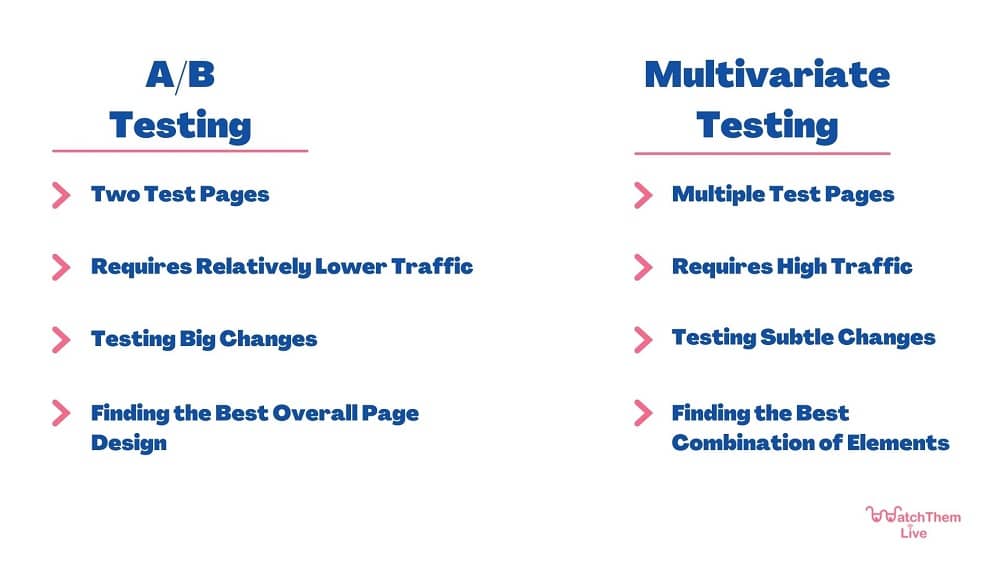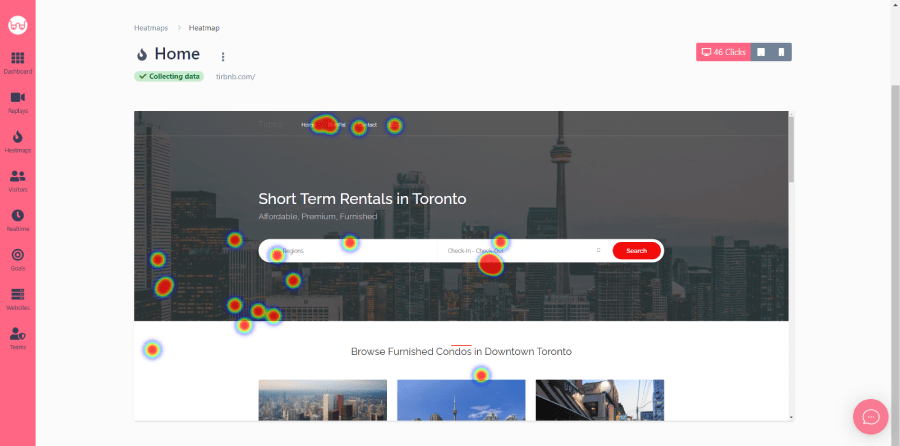Page Contents
Why is landing page testing so important to marketers? It’s because landing pages are only designed to encourage users to take action and nothing else. Therefore, landing pages play a big role in conversion rate optimization.
You can only know how effective your landing page is after it’s published. That’s why you should constantly test your landing page and optimize it. Sometimes, making a small change to your landing page can significantly impact the conversion rate.
Want to know how to test your landing page and make the most out of it? Here’s all you need to know.
Related Article: The Ultimate Landing Page Checklist
What Is Landing-page Testing?
Landing-page testing is the process of running experiments on several versions of a landing page to see which one performs better. The version that drives the most conversions and goal completions and has the least percentage of bounce rate is the winner of the landing-page test.
Why Is Landing Page Testing Important?
First, let’s take a deeper look at the importance of landing page testing.
Landing pages are one of the key factors that determine the success of your marketing campaigns. If they don’t work well, your marketing efforts won’t produce desired results, which would be a waste of money and resources.
Landing pages are a turning point in the users’ journey, and it’s when a visitor decides whether to take a step closer to becoming a customer or not.
A good landing page increases return on marketing investment and reduces lead acquisition costs.
If you don’t design your landing page carefully, visitors leave your website in less than 20 seconds. You don’t have much time to make a visitor stay on your website, let alone take action.
Testing helps you make your landing pages more effective and stops users from quickly abandoning your website. Moreover, the more you test your landing pages, the better you can optimize them to increase conversions.
How Do You Test a Landing Page?
There are two landing page testing methods: A/B testing and multivariate testing. Let’s see how each of them works.
1- A/B Testing
A/B testing or split testing is when marketers create two versions of the landing page and compare their conversion rates to identify the more effective one. This method is one of the easiest ways to find out how to increase your conversion rate.
The important thing about A/B testing is that the two pages must only vary in one element each time. This way, you can find out how each element on the landing page affects user behavior.
The two versions are tested simultaneously, while the website traffic is randomly split between them. This is necessary for obtaining the most accurate data. The conversion rate of the two pages will be compared after a reasonable amount of users have visited them.
2- Multivariate Testing
Multivariate testing is very similar to A/B testing, except that more than two landing page versions are compared in multivariate. This method allows you to test different elements at the same time. By testing multiple elements simultaneously, you can determine which one has the highest impact on user behavior.
Multivariate testing speeds up the testing and optimization process because you don’t need to test each element separately. The only thing is that this testing method best works for websites with high traffic. You can’t collect reliable data with low website traffic since it is split between various landing pages.


Landing Page Testing Tips
Here are some tips for landing page testing to help you increase your website’s conversion rate.
1- Consider Different Audiences
Usually, websites have more than one audience, and each has different expectations. Therefore, if your website has different audiences, it wouldn’t be easy to satisfy all of them with just one nonspecific landing page.
Landing pages affect each audience differently. Designing different versions of your landing page for each demographic is more welcoming to your visitors. When users visit your website, let them choose what they prefer to see. For example, you can create a menu that allows visitors to select their industry and see a specific version of your website.
This strategy can also help you retarget your visitors more easily. Knowing which page each visitor has viewed enables you to segment users. Then, if a visitor doesn’t convert, you can use this information in your retargeting campaigns to show them your ads.
If you think having multiple landing pages is inappropriate for your business, I recommend you keep testing different versions to find the most effective one.
2- Avoid Complexity
You only have a few seconds to capture a visitor’s attention, otherwise, they will leave.
The first thing that attracts a visitor’s attention is visual stimulation. That’s why it’s important to avoid visual complexity.
Remember that visitors are there because they were interested in your ad. So this should be the sole focus of your landing page. Let visitors get your message at a glance.
It’s tempting to share details about your products and services and how they can help people, but bombarding visitors with information overwhelms them. Too many elements and information distracts visitors and confuses them about what to do next. When designing a landing page, you should only think about leading users to the conversion goal.
In short, make everything as simple as possible.
However, landing page simplicity might not always be a determining factor for improving conversion rates despite all this. If you already have a simple and minimalist landing page and a low conversion rate, try adding a few elements and see how things work out.
3- Start with a Flexible Template
It’s essential to design a flexible landing page first and then test it. This way, you can perform landing page testing without making fundamental changes every time. Otherwise, it’s a waste of time and effort.
Landing Page Testing Tools
You can use a tool like Google Optimize for landing page testing. This tool is integrated with Google Analytics and can help you improve your website. Here are the features Google Optimize offers:
- Different experiment types
- Visual website editor
- Website customization for each segment of users
- Reporting
- Experiment management
- Multiple objective types
- Integrations
Google Optimize has both a free and a paid version. Unfortunately, the Google Analytics audience customization feature is unavailable in the free plan. Also, multivariate testing, experiment objectives, and simultaneous experiment are limited.
Related Article: Google Analytics Heat Mapping: Complete Review and Alternatives
Besides Google Optimize, other platforms, like WatchThemLive, offer useful tools to help you perform landing page testing more effectively.
Landing Page Testing with Watch Them Live
This experience optimization platform helps you better understand your visitors’ behavior and improve your website. It provides features such as session replays, heat mapping, website analytics, and real-time data. Using these tools facilitates landing page testing and optimization and gives valuable insights into improving your website.
How can each of these tools help you?
Session Replays
Session recordings allow you to watch how users behave on your landing page. You can find out if users are interacting as you planned or not.
Heat Mapping
Heat maps show you which areas on your landing page are more popular. They will tell you if essential elements on the landing page are not engaging enough. For example, maybe your call to action is not drawing much attention. Now that you know where the problem is, you can fix it.


Website Analytics
Website analytics helps you know your audience and segment them more easily. This information enables you to design specific landing pages.
Real-time Data
This feature allows you to track the landing page testing process in real-time.
Want to try out WatchThemLive? Check out the plans and choose the one that best suits your needs.
Conclusion
Landing page testing is essential for increasing the conversion rate. If you have weak landing pages, your marketing campaigns might fail.
Choose an appropriate testing method for your website and use the right tools to boost conversions.


